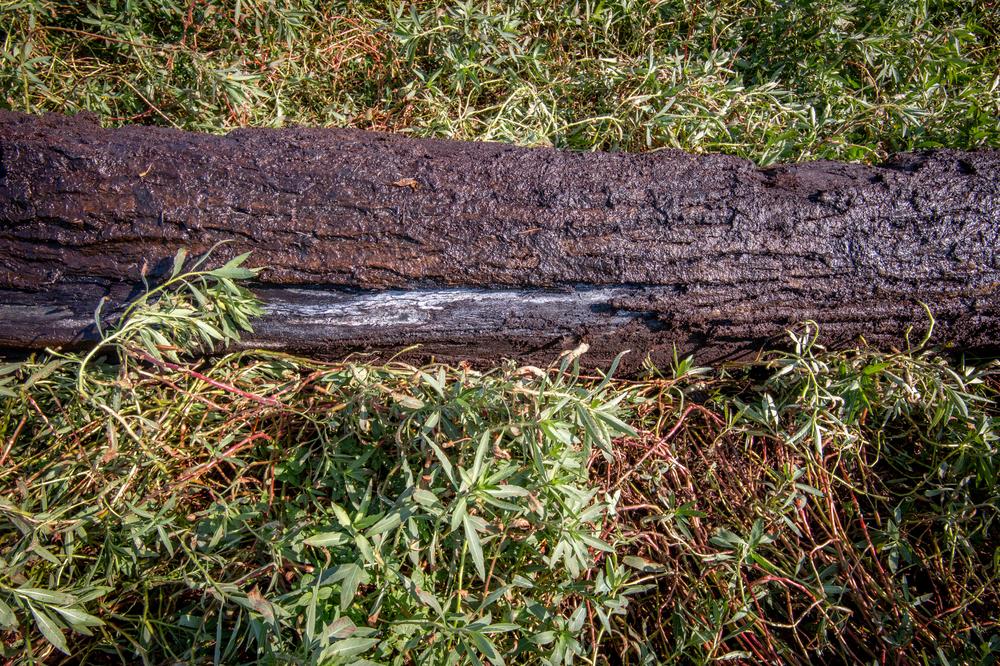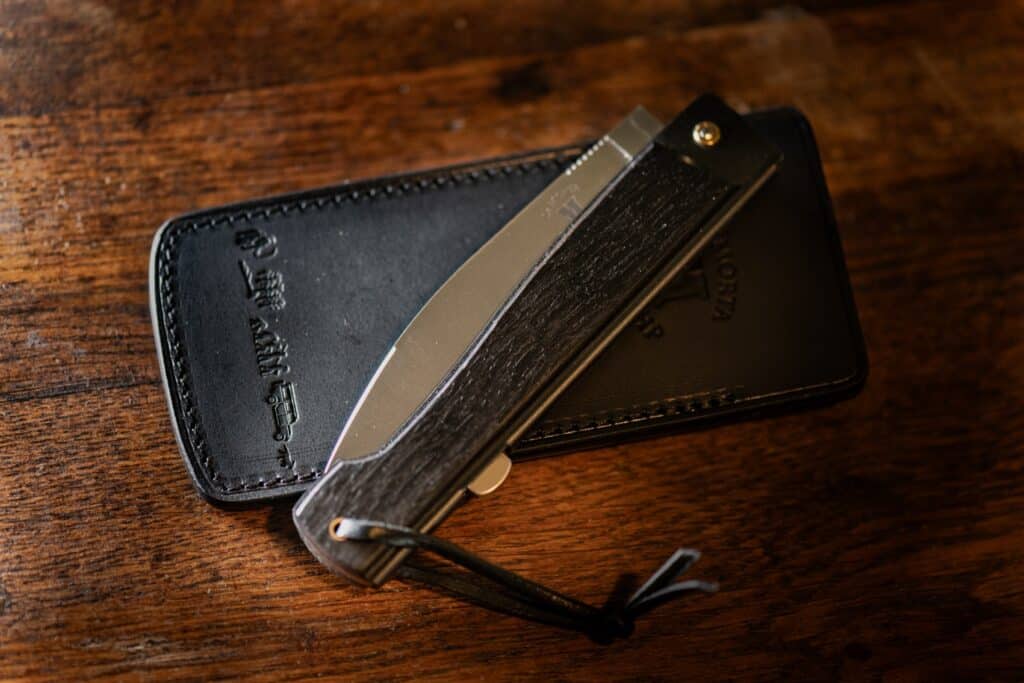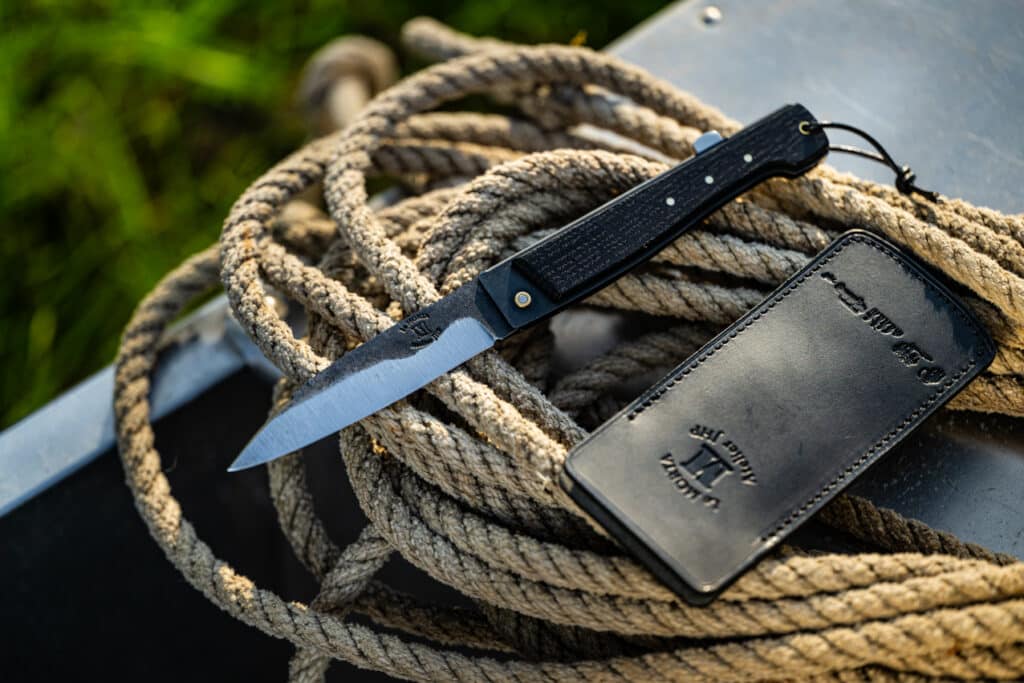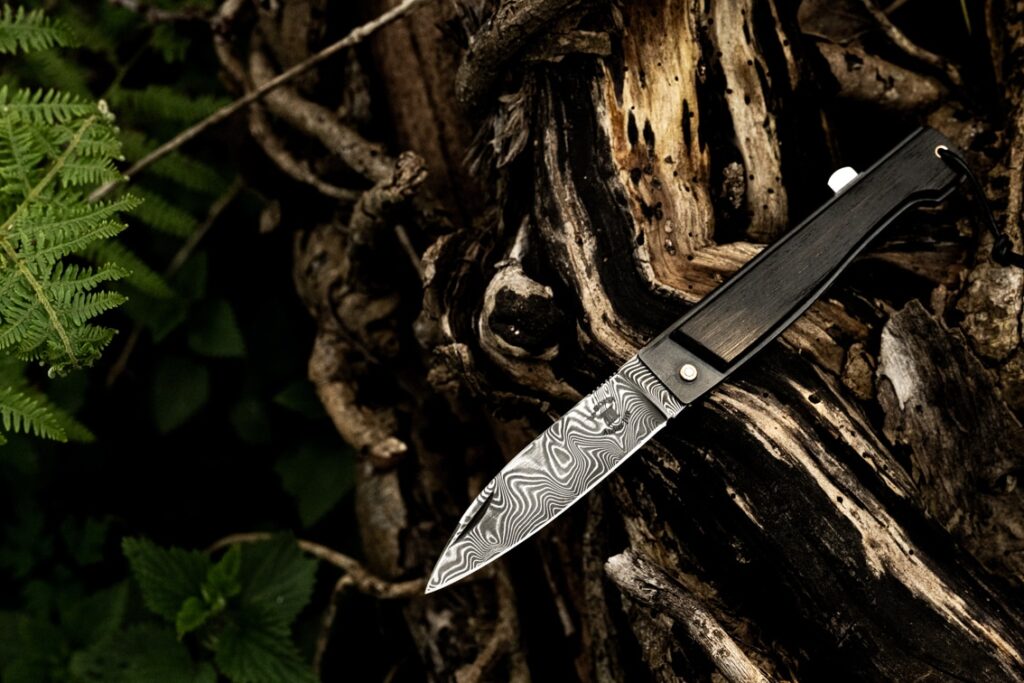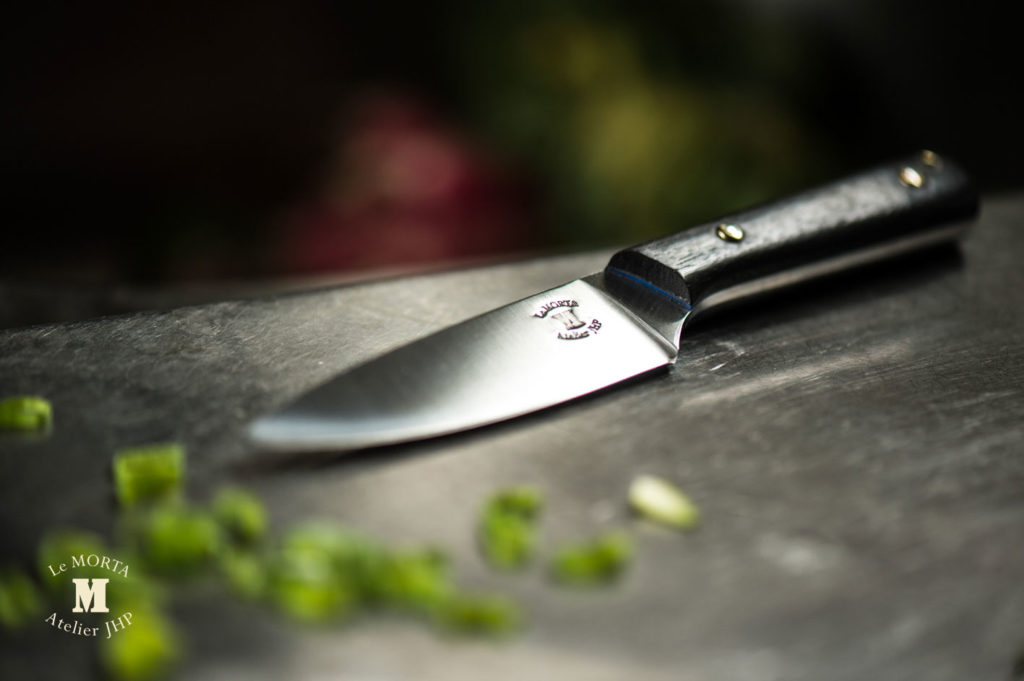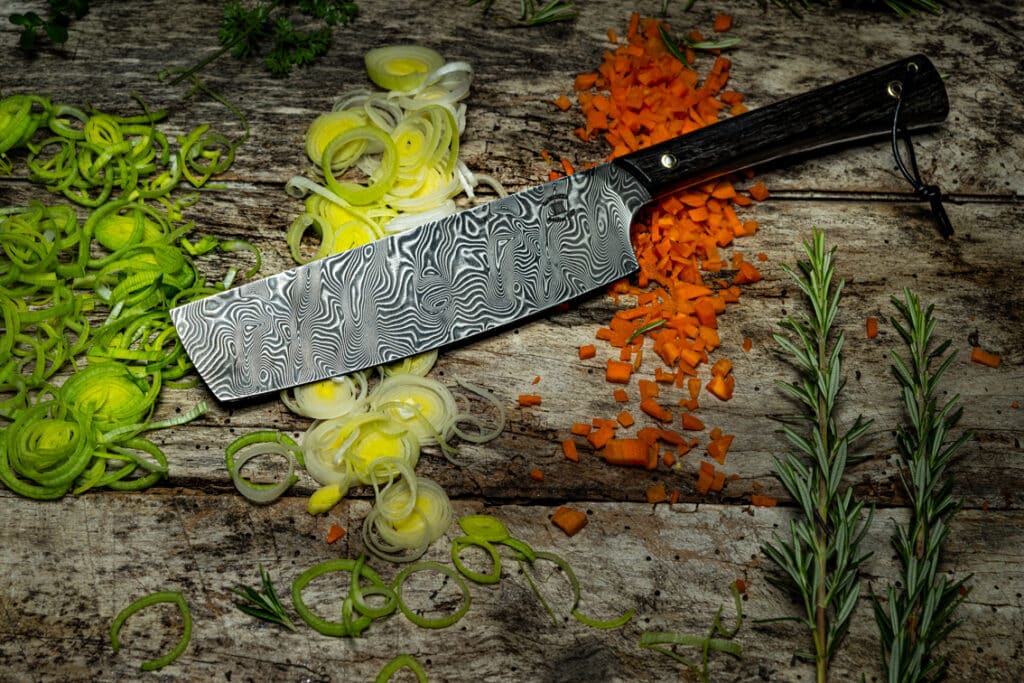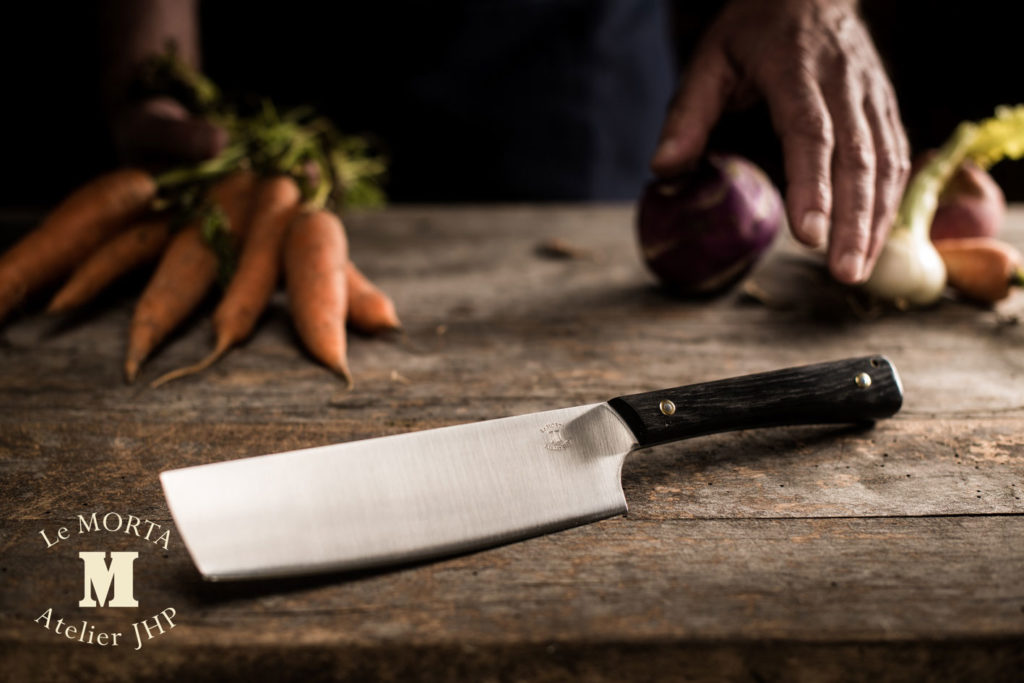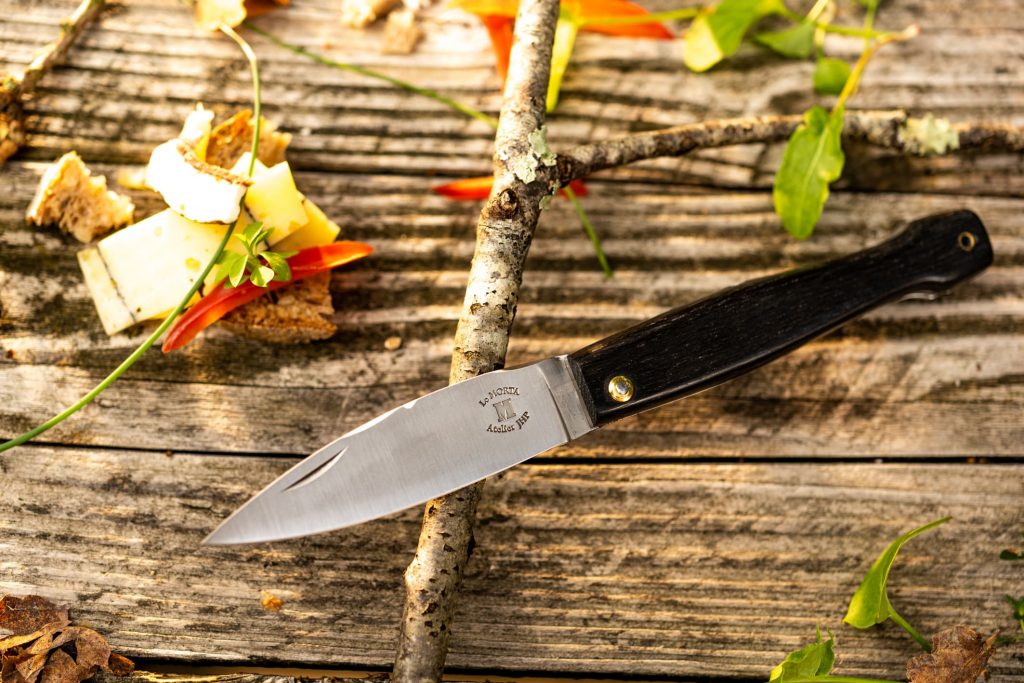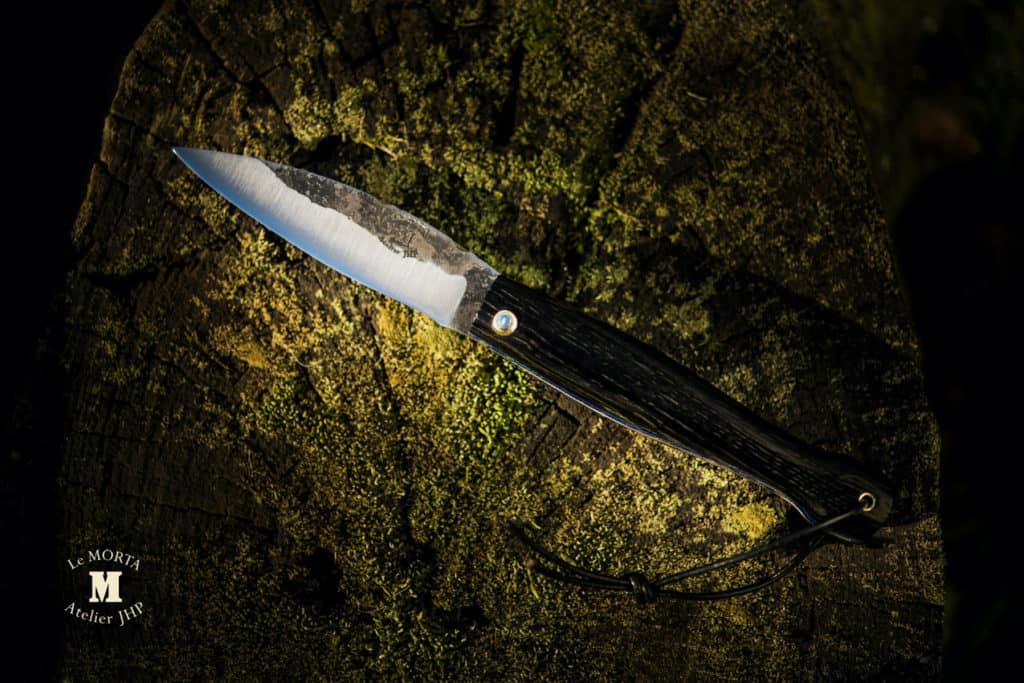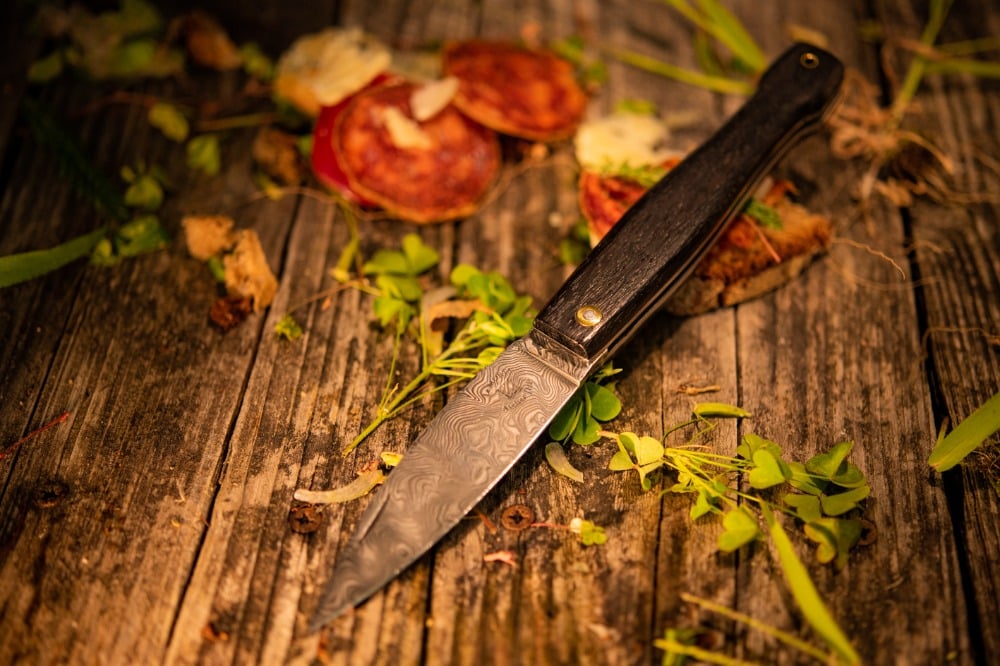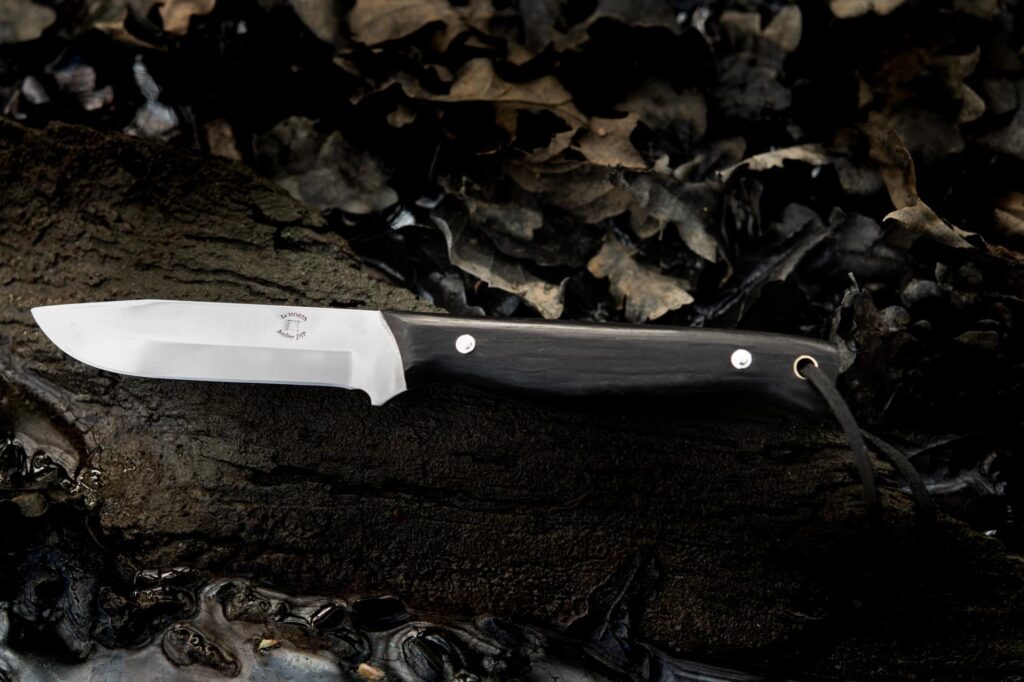A marsh oak buried in peat, this wood only bears the name Morta if it comes from Brière. But why? Because the word « morta » is part of the Brière dialect, and its manufacture stems from the creation of the Brière itself. Deeply rooted in local culture, morta wood is an integral part of the linguistic, literary, craft, historical and geographical heritage of the Brière Regional Nature Park. A wood in the process of fossilization, it is extracted by hand according to strict rules defined by the Commission syndicale de la Grande Brière Mottière in agreement with biodiversity services. It is only sold in the Brière region, on handcrafted objects and never as raw or solid wood. Its richness and nobility come from its rarity and beauty. It’s up to you to sublimate it with your emotions when you hold it in your hands. What is morta wood? Let’s get to know this unique material, shall we?
What is Morta wood?
Definition of morta, the wood of the Brière marshes
It’s impossible to define morta without linking it to the land of its birth: the Brière.
Morta is the marsh oak buried in the peat of the Brière. This wood is in the process of fossilization. Gradually, the minerals in the soil (in which it is found) replace the organic matter of which it is composed, without modifying its atomic structure. It is therefore not silicified, petrified or fossilized wood.
🌳 Morta is a swamp oak, but not all swamp oak is morta. 🌳
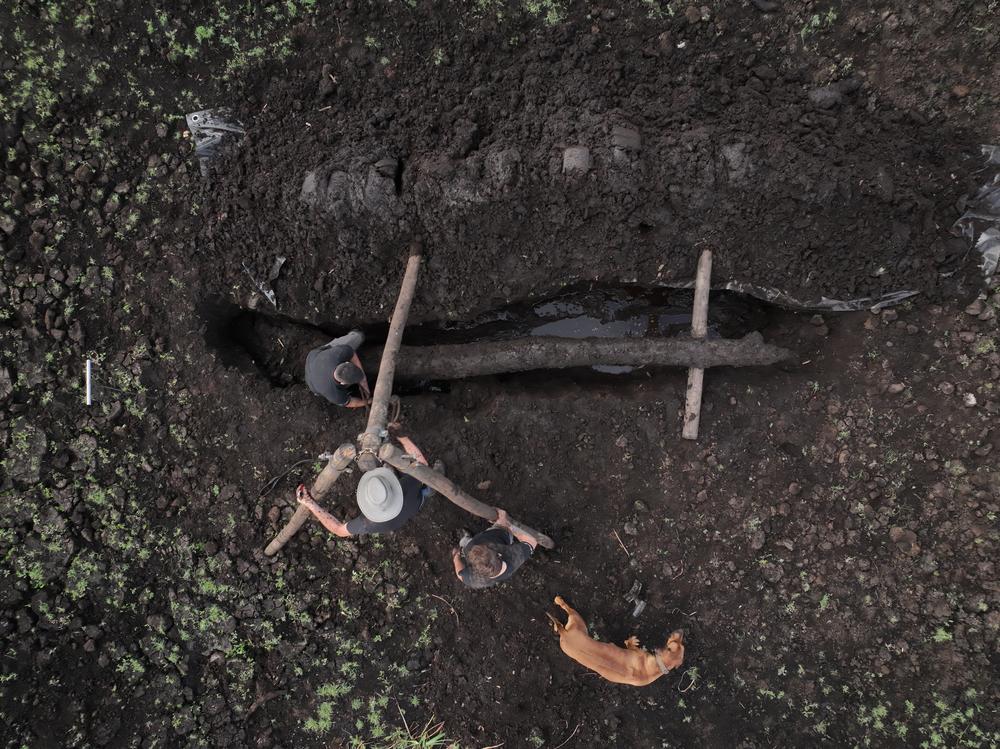
😉 NB: Let’s not talk about « morta wood », but simply « morta ». Would you say « oak wood » or « pine wood » ?
Features and benefits of morta
Its color is dark, almost ebony. A few caramel highlights alter its blackness. Each piece of morta is unique. Very dense and hard, morta is a wood of great nobility, slowly earned over 5,000 years of silicification. It’s a very resistant wood, but its greatest advantages remain its rarity and uniqueness. In fact, only around 20% of a morta trunk is usable. We are working on new techniques to improve this yield.
You can’t justify buying morta; you have to feel it. How do you explain the emotion conveyed by this piece of history?
Possible uses for morta
Traditionally, morta was used to build thatched cottages. The Briérons gathered it with peat and used it as firewood. Indeed, they appreciated its slow combustion due to its unusual density. What a shame, isn’t it?
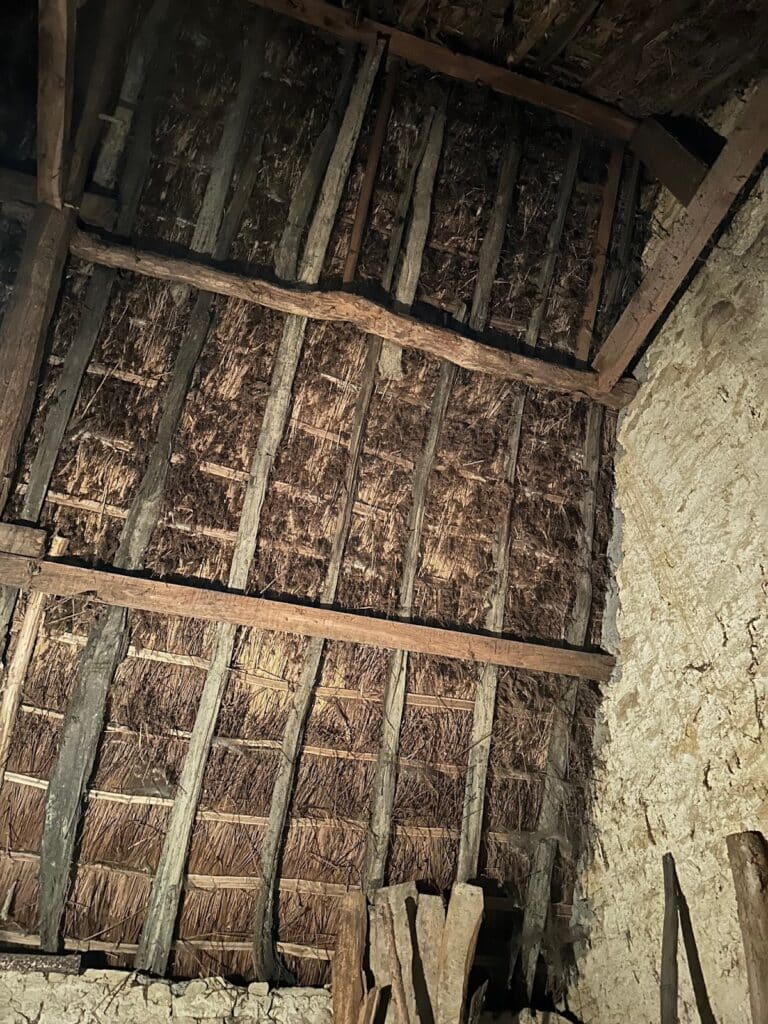
Mortar-frame barn still in use in December 2023.
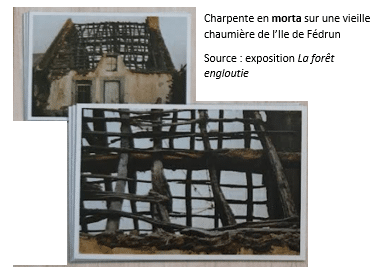
This unmistakable black wood also identifies landmarks for hikers on « morta trails ».
Now recognized as a noble, high-quality material, it is only used for handcrafted creations such as knives and jewelry.
Morta furniture (tables, chairs, wardrobes) does not exist.
Where can I buy Morta wood?
Morta is only sold in Brière and transformed into objects. There are no dealers in raw morta. As a result, you can find knives with Morta handles, silver jewelry with a piece of Morta, sculptures and even Morta pens. In the 80s, a pipe-maker from Herbignac (in the Loire-Atlantique département) was making pipes (you guessed it 😅). There are still a few rare sculptors who exhibit their work, notably at the Brière craft markets.
So if you come across a website offering to buy raw morta, solid morta, morta in planks, slabs, blocks or other morta for assembly, beware! It’s bound to be another swamp oak.
Our kind advice 😊
For a responsible purchase, find out where the wood on offer comes from. Most swamp oaks come from Eastern European countries. The influx of this new (unfair, let’s face it) competition prompts us to advise you to exercise the utmost caution and differentiate between the real and the fake morta.
Indeed, in view of the love we receive from our customers, it is becoming increasingly common to see importers offering swamp oak from Poland, Lithuania or even Russia, and adding the word “Morta” to it. Of course, this questionable approach is an affront to the work we do every year in the Brière region, in the face of the uncontrolled extractions that take place outside our borders. Above all, it’s a way of confusing consumers and playing on their ignorance of the subject.
And if you’d like to buy genuine morta, visit the Couteaux Morta boutique or our workshop in Saint-André des Eaux (44).
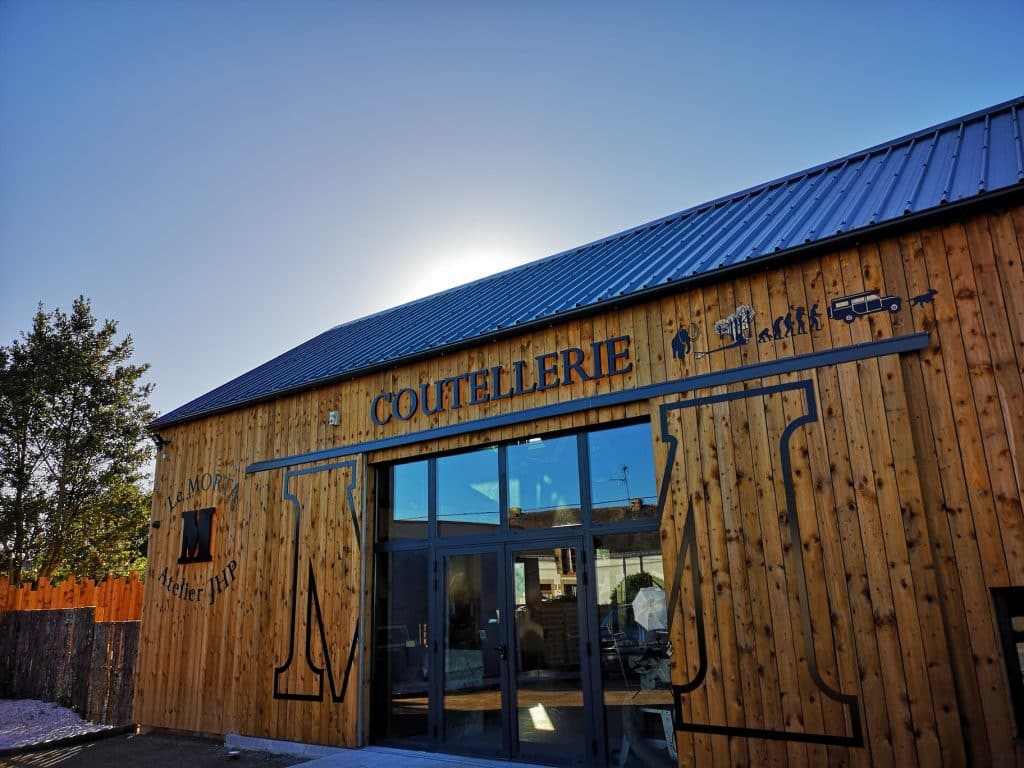
How is morta formed?
In the beginning was the Brière
To understand how morta is formed, you need to know how the Brière subsoil was formed. We’ve warned you, one can’t go without the other 😅.
Let’s travel back some 5,000 years to the Neolithic period. The Brière region is subject to many comings and goings of currents alternating between fresh and salt water from the Atlantic Ocean. These geological upheavals created a basin where marshes and mud developed. Gradually, an immense oak forest took root.
Twice, the oaks collapsed due to ground movements: around 2,300 BC, then 1,000 BC. Peat molasses buried the forest.
The peat deprives the trunks of air and oxygen (anoxic environment). So they don’t rot. On the contrary, they are protected and feed on the many soil nutrients derived from organic elements: sedge, typha or wolf candle, white rush or fifande, green rush and, above all, reed.
Oak trunks are particularly rich in silica, giving morta its specific, almost black color. The brownish highlights come from the combination of black and brown peat found in the Brière region.
At Couteaux Morta, we like to say that the soil served as a natural sarcophagus for the oak trunks. Quite a pretty image for these trees, contemporaries of the Pharaohs, don’t you think?
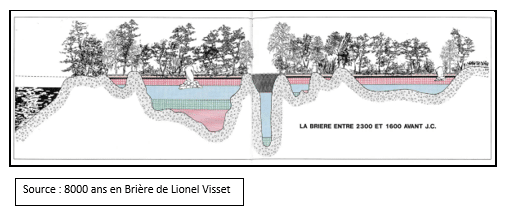
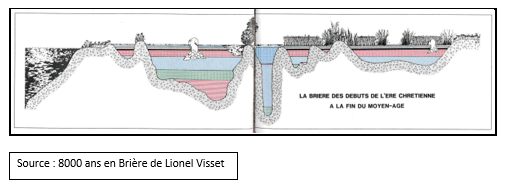
Science explains the link between Brière and morta
Scientific and journalistic works trace the creation of the Brière soil and the formation of morta:
- Notre Brière by Augustin Vince, professor of geology at Nantes University;
- Mystérieuse Brière by Renée Guillemin;
- Nature insolite en France by Pierre Pellerin, journalist and writer specializing in nature and ecology;
- 8,000 ans en Brière by Lionel Visset, palynologist*, Doctor of Science at the Institut des Sciences et de la Nature, teacher-researcher at the Laboratory of Ecology and Phytogeography, Faculty of Science, Nantes.
Palynology: the study of current or fossil pollen grains and spores.
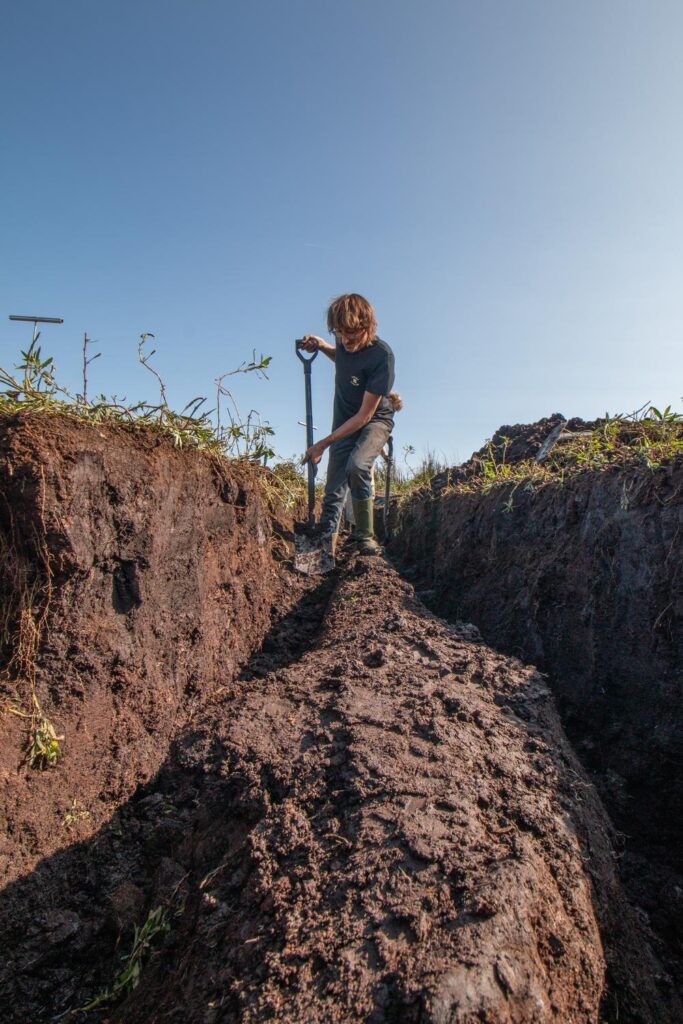
Morta extraction: a manual technique that respects the environment
A very physical manual extraction
These photographs from the early 20th century show the discovery of morta trunks as a magical and hazardous adventure. At the time, Brière farmers dug up morta during peat bogs.
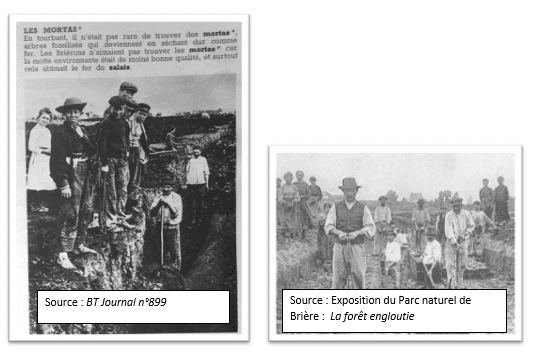
Today, the search is still carried out using a simple metal probe. We set off (yes, a morta cutler is also an extractor😅 ) as the countryside whitens, equipped with our good humor and a lot of courage, because believe us, it takes it! All day long, the probe goes in and out of the ground until we feel resistance. Then we mark out the area to judge the size of the trunk. Only then does the real extraction – the hard work – begin. See for yourself!
But strictly regulated
Extraction is governed by strict, precise rules set down by the Commission Syndicale de la Grande Brière Mottière, in agreement with the Brière Regional Nature Park and biodiversity services.
This agreement prohibits the use of heavy handling and transport equipment. To control crowds and trampling, the Commission requires a declaration prior to any major report or visit.
Each year, the specifications redefine :
- the exact area where extraction is authorized ;
- the precise period ;
- the log quota;
- the amount of the annual fee for extraction rights.
These precautions guarantee respect for the ecosystem and the protection of flora and fauna.
The authorities insist on a perfect restoration of the site after extraction. Limits that we validate and fully support.
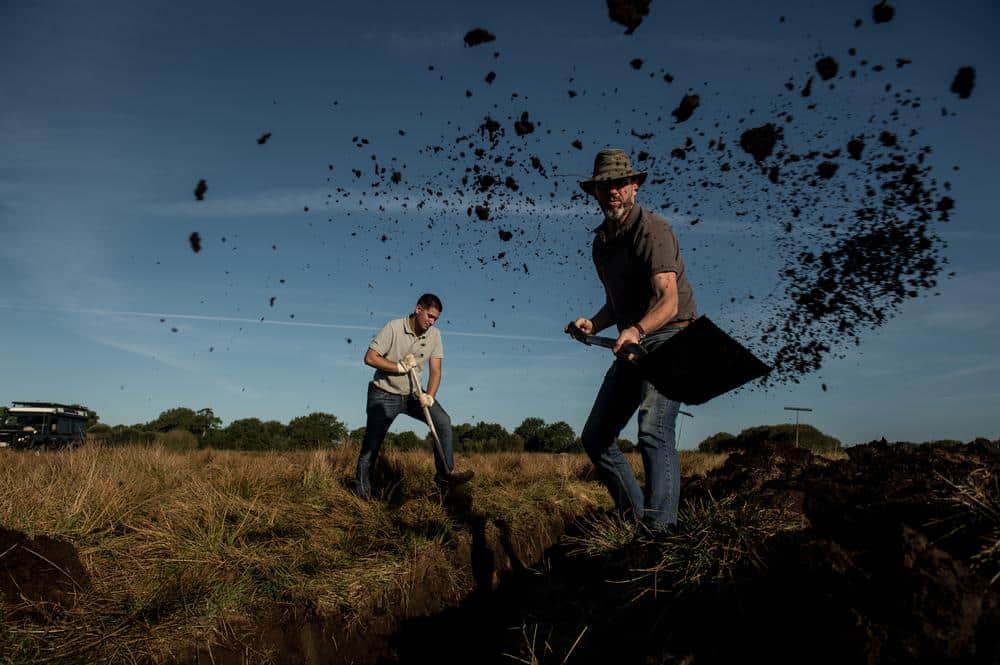
The origin of the word Morta: a purely Brière term
« Morta » is an old-fashioned word from the Brière dialect. Firmly anchored in local culture, it has its roots (no pun intended) around Saint-Joachim, Mayun and the island of Fédrun, right in the heart of the Brière.
Morta in the Brière language
The local association La Pierre Chaude promotes the links between tradition and memory. In a glossary, it lists all words of Brière origin, including the word morta, with the following definition:
Morta: Fossilized wood (oak) found in peat.
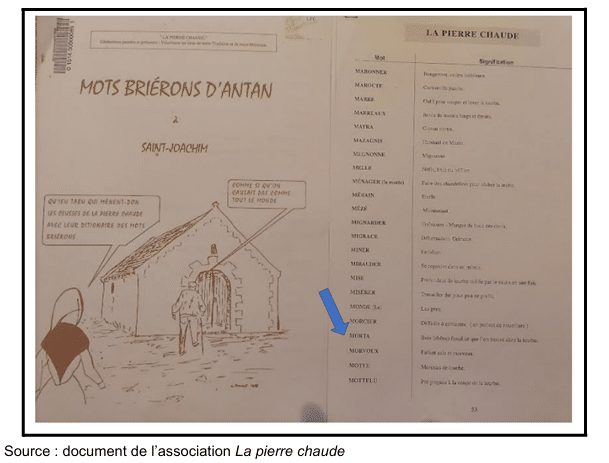
The BT Journal (Bibliothèque de Travail, Publications de l’École Moderne Française, pédagogie Freinet) publishes a glossary in La Brière, un marais et sa vie autrefois.
Morta: fossilized tree trunk buried in the ground.
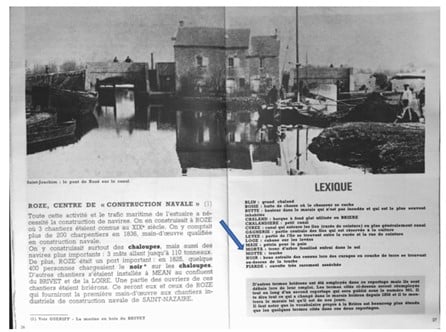
Source Le BT Journal
Morta in Brière literature and legends
Alphonse de Châteaubriant’s La Brière:
In his novel La Brière, written in 1923, Alphonse de Châteaubriant turns the Morta into a real character in history.
💡😉It was this novel that inspired us to create Morta Knives.
Notre Dame de Blanche Couronne:
Dame de Blanche-Couronne longed for her husband to return from the Crusades. Set off alone into the forest and beset by brigands, she throws her wedding ring in their faces, imploring her beloved to rescue her. Immediately, the forest sinks into an abyss, burying the attackers. A new Brière appears.
The Châteaubriant novel refers to this legend.
Le Morta, le Corseau
In 1998, Brière storyteller Paul Burban wrote this poem.
This is the story of the oaks and the reeds. The story tells how the gods, angered by the kings who wanted to gather to boast of their exploits, unleashed such a cataclysm that everything was buried. Or how the gods punished man’s pride.
« The oaks stood tall and proud…
Torn-down oaks broken by the current…
Among the old oaks of a sunken forest, in this deep swamp that knew how to welcome them… ».
The mortar pipe
« He held a pipe between his lips, which I could tell was made of morta. You know, the morta that comes from the thousand-year-old fossilized trees found at the bottom of the Brière ». The hero of the story receives a Morta pipe from the god of the marshes, Neptune’s cousin, to thank him for his help.
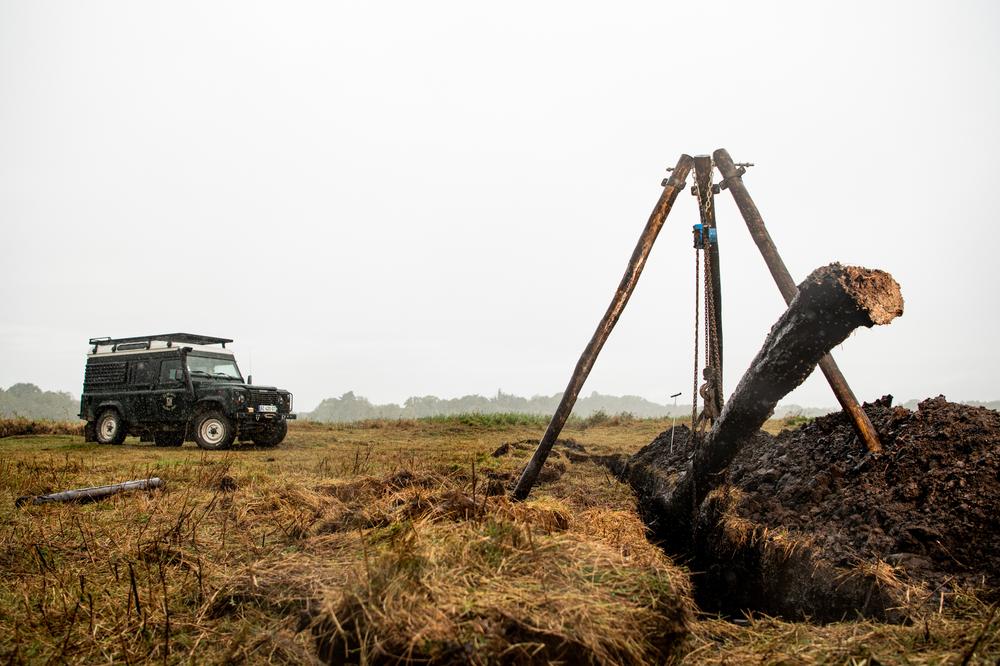
Caring for Morta Wood
As explained above, morta wood has spent several millennia in a humid environment. While it resists shock very well, it no longer appreciates contact with water. For this reason, morta can simply be cleaned with a soft cloth. From time to time, you can apply a little beeswax.
Keep it away from light.
💡Morta is not a stabilized wood, as this would mean that we have injected it with resin to increase its strength.
We sometimes hear talk of rot-proof wood. We can’t say for sure. Morta is in the process of fossilization. Even after 5,000 years of confinement, it’s still very much alive. But rest assured, once in our hands, your handle will never move again.
For your folding knife, the best place remains the bottom of your loved one or the palm of your hand, the choice is yours 😉.
Caring for the handle of your morta knife
Too often equated with any other marsh oak, morta comes from the unfailing association of marsh oak and Brière peat. Protecting this unique identity is close to our hearts as lovers of tradition and fervent defenders of geographical and cultural heritage. It’s a message we’ll soon be taking to the highest levels of French institutions, and we’ll tell you more about it later 😉.
Until then, be our ambassadors and spread the word by recognizing the true value of this unique wood.
Other publications by Lionel Visset.
Article written by Christelle Lorant.


